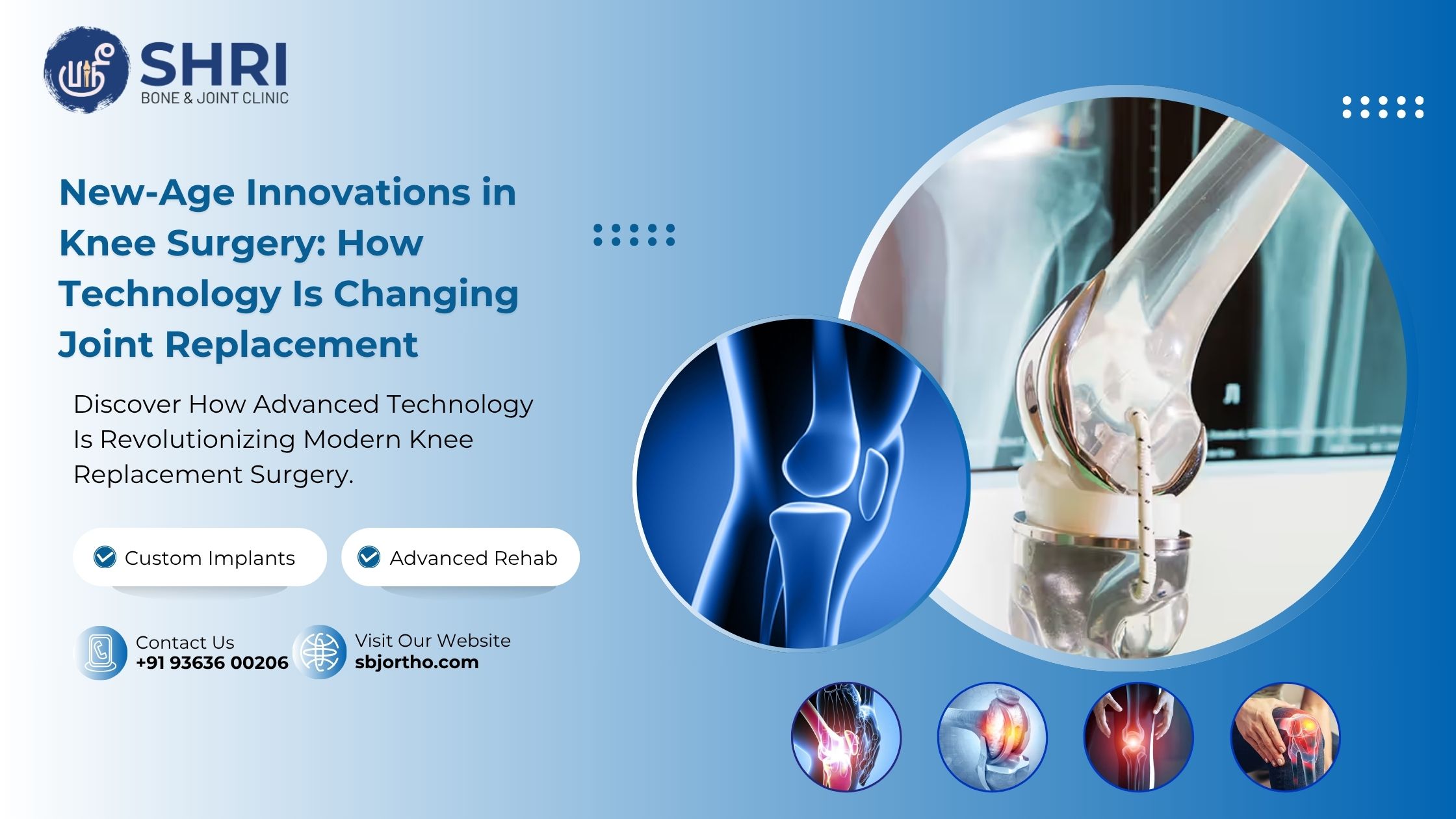Over the past two decades, orthopedic surgery has undergone a remarkable transformation. What was once an invasive, lengthy procedure now benefits from advanced precision tools, personalized implants, and faster recovery techniques.
Modern innovations have not only made knee replacement surgeries safer and more accurate but have also significantly improved patient comfort and long-term outcomes. Let’s explore the most exciting technological advancements that are redefining how knee replacements are performed today.
The Evolution of Knee Surgery
Traditional knee replacement surgery involved large incisions, manual measurements, and longer hospital stays. While it offered relief from arthritis pain, it often took months for patients to regain full function.
Today, medical technology has reimagined this process. With 3D imaging, robotic assistance, and customized implants, surgeons can now perform knee replacements with sub-millimeter accuracy. These breakthroughs have minimized pain, shortened recovery periods, and enhanced implant longevity.
1. Robotic Knee Replacement Surgery – Precision Like Never Before
Among the most impactful developments in orthopedics is Robotic Knee Replacement Surgery. In this advanced technique, surgeons use a robotic-assisted system to perform highly accurate bone cuts and implant placements based on a patient’s anatomy.
Before surgery, a 3D model of the knee is created from CT or MRI scans. This allows for detailed pre-surgical planning and precise execution during the operation. The robot doesn’t perform the surgery alone—it acts as an extension of the surgeon’s hand, improving accuracy and control.
Benefits include:
- Perfect implant alignment and balance
- Smaller incisions and minimal tissue damage
- Faster rehabilitation and reduced post-surgery pain
- Longer implant lifespan due to improved fit
Robotic surgery represents a leap toward fully personalized knee replacement, offering patients a smoother recovery and better long-term performance.
2. Conformis Knee Replacement – Personalized Implants for Every Patient
No two knees are exactly the same, and Conformis Knee Replacement embraces that fact. This approach uses advanced imaging and 3D printing technology to create implants customized to the patient’s exact bone shape and size.
Unlike standard “off-the-shelf” implants, Conformis designs match the patient’s unique anatomy, ensuring natural movement, proper alignment, and a more comfortable fit.
Benefits include:
- Perfectly tailored implants for each individual
- Minimal bone removal during surgery
- Enhanced stability and smoother motion
- Quicker adaptation and more natural joint feel
This personalized design helps patients experience a joint that feels less artificial and more like their own.
3. Laser Knee Surgery – The Rise of Minimally Invasive Precision
Laser technology has revolutionized many areas of medicine, and orthopedics is no exception. Laser Knee Surgery uses focused laser beams to remove damaged tissue, smooth cartilage surfaces, or repair minor joint irregularities with exceptional accuracy.
Because it is minimally invasive, laser-based procedures cause less trauma, reduce bleeding, and enable faster recovery times. It is often used for patients in the early stages of arthritis or those needing targeted treatment without full joint replacement.
Benefits include:
- No large incisions or stitches
- Less postoperative pain and swelling
- Short hospital stay and quicker healing
- Effective for early cartilage damage or mild arthritis
For suitable candidates, laser-assisted techniques can delay or even eliminate the need for major replacement surgery.
4. Cartilage Replacement – Preserving Natural Joint Function
When cartilage damage is localized rather than widespread, Cartilage Replacement offers a regenerative solution. Instead of removing the entire joint, this method repairs or regenerates worn-out cartilage using natural tissue grafts or cultured cartilage cells.
Advanced procedures like autologous chondrocyte implantation (ACI) or osteochondral grafting restore the damaged surface, reducing pain and improving mobility. By preserving most of the patient’s natural joint, this approach helps delay arthritis progression and postpones the need for a full knee replacement.
Benefits include:
- Preservation of healthy bone and ligaments
- Restoration of natural knee movement
- Reduced pain and inflammation
- Ideal for younger patients with limited damage
Cartilage replacement bridges the gap between non-surgical therapies and total knee replacement, promoting long-term joint health.
5. Titanium Knee Replacement – Durability and Biocompatibility
Implant material plays a crucial role in the success of any joint replacement, and Titanium Knee Replacement is a standout in that category. Titanium implants are strong, lightweight, and resistant to corrosion, making them one of the most reliable materials for long-term use.
They are also hypoallergenic, which means they are ideal for patients with metal sensitivities. Titanium’s ability to integrate seamlessly with bone ensures excellent stability and comfort.
Benefits include:
- Long-lasting and corrosion-resistant
- Lightweight for easy movement
- Reduced allergic reactions
- Excellent long-term performance
When combined with modern surgical techniques, titanium implants can provide up to two decades of pain-free mobility.
Technology and the Future of Knee Surgery
As medical science advances, the trend is moving toward precision medicine—where every patient’s treatment is uniquely planned and executed. Innovations like robotics, laser technology, and 3D-printed implants have made knee surgery safer, more predictable, and more comfortable than ever.
Future research is also exploring the use of AI-driven planning, smart implants that monitor joint performance, and stem cell regeneration to further improve outcomes and reduce recovery time. The ultimate goal is to make knee replacement so seamless that patients forget they ever had surgery.
The Bottom Line
Modern knee surgery is no longer just about replacing a joint—it’s about restoring natural movement, comfort, and confidence. Whether through Robotic Knee Replacement Surgery for precision, Conformis Knee Replacement for personalization, Laser Knee Surgery for minimal invasion, Cartilage Replacement for regeneration, or Titanium Knee Replacement for durability—technology continues to redefine what’s possible.
Patients today have more options than ever to find a treatment that aligns perfectly with their lifestyle and mobility goals.

